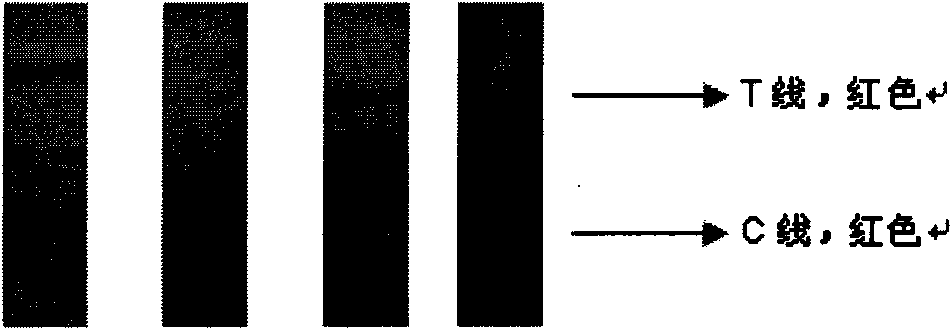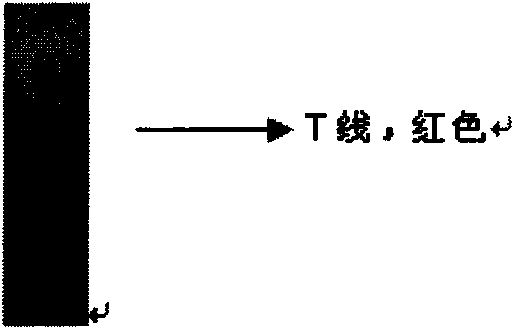Nucleic acid nano-gold biosensor for detecting influenza A viruses and influenza A (H1N1) viruses
An influenza A virus and biosensor technology, applied in the biological field, can solve the problems of time-consuming, labor-intensive, non-productized, complex and expensive transmission electron microscopy, etc.
- Summary
- Abstract
- Description
- Claims
- Application Information
AI Technical Summary
Problems solved by technology
Method used
Image
Examples
Embodiment 1
[0051] Example 1: Design of specific primers and probes for influenza A virus and influenza A H1N1 virus
[0052] At NCBI http: / / www.ncbi.nlm.nih.gov / genomes / FLU / Database / request.cgi Find out all the MP gene fragment sequences of influenza A virus in, and find the conservative segment of influenza A virus through multiple alignment. Express Primer is used to design primers and probes on its conservative fragments.
[0053] The primers and probes were designed by using Express Primer based on the sequence of the HA gene fragment of H1N1 (2009 epidemic). Align the designed primers and probes with all viral sequences to find the primers and probes with the strongest variability.
[0054] The full-length HA gene sequence of the above type A H1N1 (popular in 2009) is derived from NCBI (>gi|227809829|gb|FJ966082.1|InfluenzaAvirus(A / California / 04 / 2009(H1N1)) segment 4 hemagglutinin(HA)gene , Complete cds)
[0055] The design results are:
[0056] Specific probes and primers for influenza ...
Embodiment 2
[0069] Example 2: Preparation of the nucleic acid nano-gold biosensor for detecting influenza A virus according to the present invention
[0070] 1. Preparation of nano gold (colloidal gold):
[0071] Add 100ml 0.01% HAuCL to a 500ML round bottom flask 4 The solution is heated to boiling while stirring; 2ml of 1% sodium citrate is added to the above solution, the solution turns blue within 20 seconds, and turns to wine red after 60 seconds. Continue boiling for 10 minutes, stop heating and continue stirring for 15 minutes; colloidal gold solution Store in the dark at 4°C, and the nano-gold is identified by the maximum absorbance value at 520nm.
[0072] 2. Preparation of gold-labeled oligonucleotide probe: Dissolve 1OD DNA-probe 2 in 100μl deionized water, add it to 5 times the volume of concentrated colloidal gold solution, 4℃ for 24 hours; 10% bovine serum albumin After blocking for 30 minutes, add NaCl and 1% SDS to the final concentration of 0.1M and 0.01%, respectively, overnig...
Embodiment 3
[0083] Example 3: Preparation and detection method of the kit for detecting influenza A virus and influenza A H1N1 nucleic acid nano-gold biosensor according to the present invention
[0084] The kit of influenza A virus and influenza A H1N1 influenza virus nucleic acid nano-gold biosensor includes the following components:
[0085] RT-asymmetric PCR reaction reagent, influenza A virus and influenza A H1N1 virus nucleic acid nano-gold biosensor;
[0086] The RT-asymmetric PCR reaction reagents include: 10 times RT-PCR buffer 150μl, dNTP solution 150μl, magnesium ion 150μl, enzyme mixture 60μl, RNase inhibitor 30μl, type A upstream primer 30μl, type A downstream Primer 30μl, H1N1 upstream primer 30μl, H1N1 downstream primer 30μl; among them, the upstream primer used to detect influenza A virus contains the nucleotide sequence shown in SEQ ID NO. 4, and the downstream primer contains the nucleotide sequence shown in SEQ ID. The nucleotide sequence shown in NO.5; the upstream primer fo...
PUM
| Property | Measurement | Unit |
|---|---|---|
| particle diameter | aaaaa | aaaaa |
Abstract
Description
Claims
Application Information
 Login to View More
Login to View More - R&D
- Intellectual Property
- Life Sciences
- Materials
- Tech Scout
- Unparalleled Data Quality
- Higher Quality Content
- 60% Fewer Hallucinations
Browse by: Latest US Patents, China's latest patents, Technical Efficacy Thesaurus, Application Domain, Technology Topic, Popular Technical Reports.
© 2025 PatSnap. All rights reserved.Legal|Privacy policy|Modern Slavery Act Transparency Statement|Sitemap|About US| Contact US: help@patsnap.com



